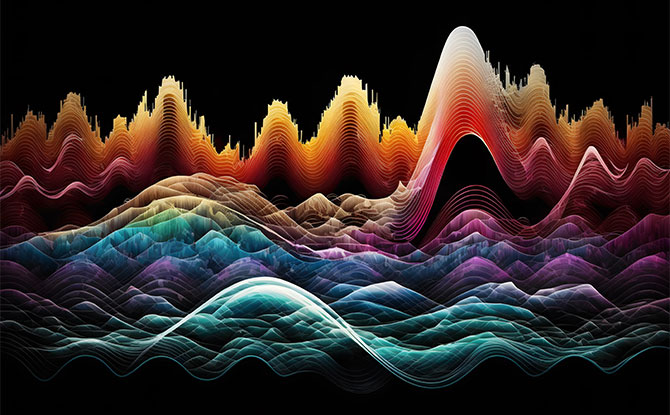When it comes to sound, you may be wondering what are harmonics and overtones and why are they even important?
When someone you know calls you up on the phone, are you able to tell who the person is? You are likely to because – in layman’s terms – you can recognise the person’s voice. There is something unique that makes a person’s voice sound like his or her voice.
Harmonics and Overtones Give a Sound its Character

In terms of sound theory, it is the harmonics that give his or her voice its unique characteristic. This is also true for other sounds.
Without the harmonics and overtones, every sound would be a simple sine wave.
Harmonics and overtones add sonic characters to a sound, whether it be a voice or an instrument.
Let’s take a closer look at what exactly harmonics and overtones are.
When you hear the piano place a note like middle C, what you are actually hearing are many different notes ringing out together at the same time. All these notes combine to create the sound that we characteristically know as that of a piano.
These different notes are called harmonics.
Fundamental Frequency and Harmonics

One of these notes is the loudest. This is called the fundamental wave or fundamental frequency. This is the main note that we will associate with the sound.
For example, when middle C is played on a piano, the fundamental frequency is 261 Hz, which is the frequency of the middle C note.
The rest of the notes are softer than the fundamental frequency and pile on top of the fundamental frequency to create the sound of a piano. This is how our ears can distinguish between a C with frequency of 261 Hz played on a piano versus a C of 261 Hz played on a guitar.
There are different factors that affect how the harmonics are created. These include factors such as the size of the instrument, the materials used, how the note is struck and so on.
Calculating the Harmonic Series
Nonetheless, these harmonics follow the laws of physics and can be calculated. They are multiples of the fundamental frequency.
For example, if you were to play the note A which vibrates at the frequency of 440 Hz, the harmonics can be calculated by multiplying 440 by 1, 2, 3, 4, 5, and so on.
Here is a worked example.
440 Hz x 1 = 440 Hz, First harmonic, or better known as the fundamental frequency.
440 Hz x 2 = 880 Hz, Second harmonic
440 Hz x 3 = 1,320 Hz, Third harmonic
440 Hz x 4 = 1,760 Hz, Fourth harmonic
440 Hz x 5 = 2,200 Hz, Fifth harmonic
440 Hz x 6 = 2,640 Hz, Sixth harmonic
440 Hz x 7 = 3,080 Hz, Seventh harmonic
440 Hz x 8 = 3,520 Hz, Eighth harmonic
and so on …
Normally, you would calculate the harmonic series up to 20,000 Hz, which is the limit of the human hearing range.
As the different harmonics combine together, both constructive and destructive interference takes place. This results in the summing and cancelling, giving the combined wave a particular characteristic shape.
The waveform created by each instrument or sound source is what allows our ears to distinguish one sound from another.
Overtones are similar to harmonics and within the musical context, the term is often used interchangeably even though there are some differences.
Next, you might want to learn more about different types of wave shapes and waveforms.

